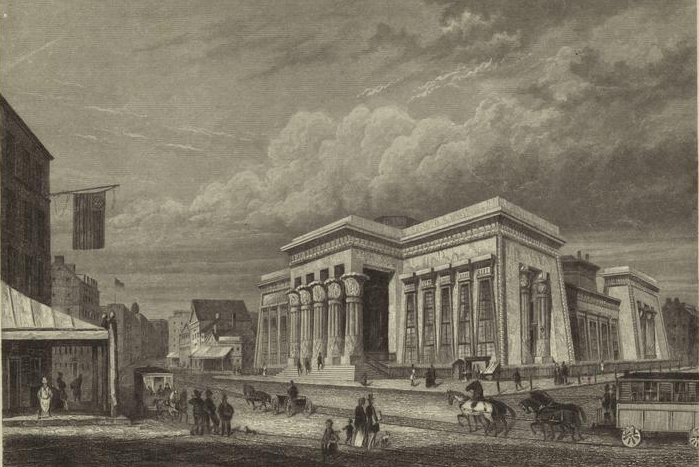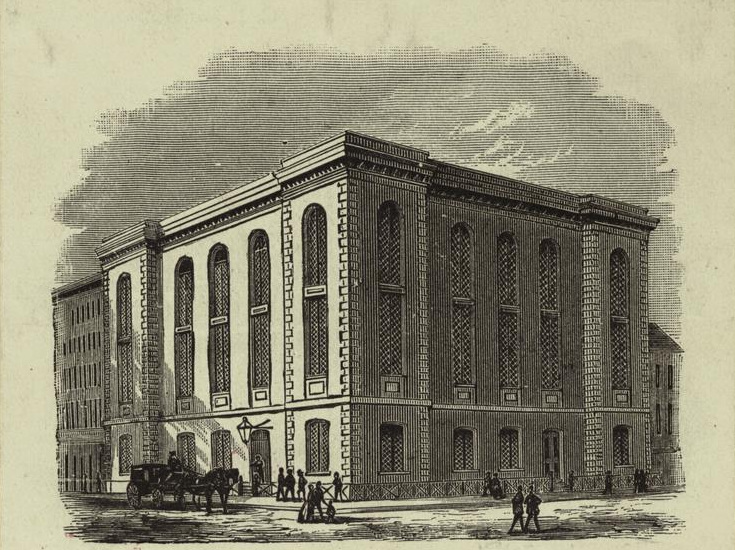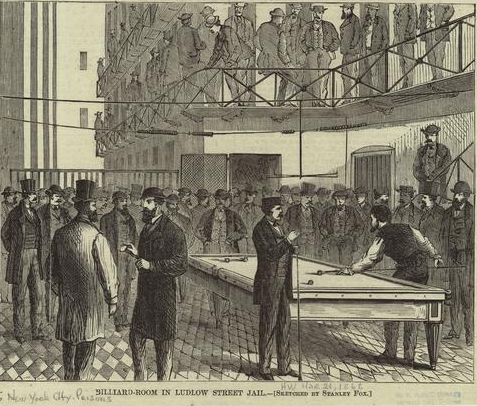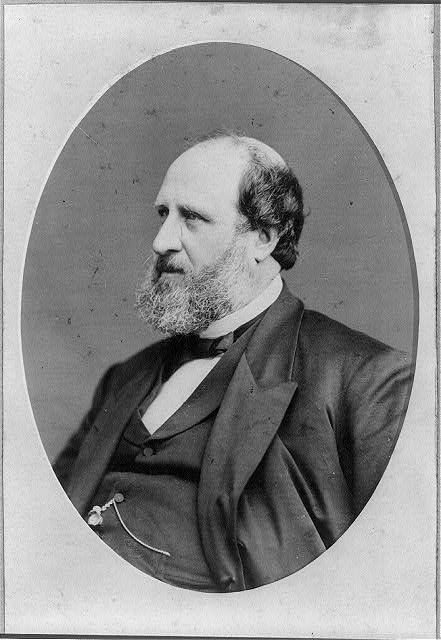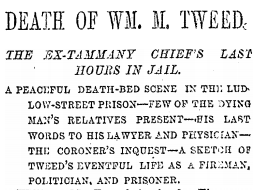Blog Archive
If You Do the Crime, You’ve Got to Do the Time
In the 19th century, the Lower East Side could be a very dangrous neighborhood for those who didn’t know it well – thieves and gang members lurked around corners, ready to pounce on unsuspecting targets. And when these criminals were nabbed by the police, they went to prison.
19th century New York City prisons were famous for their terrible living conditions, corruption and mismanagement. The original Tombs, with its grand Egyptian façade, sat in the poorly-drained Collect Pond and festered with dampness and disease as it housed hundreds of inmates from the Five Points slum and City Hall.
One jail was a bit closer to home for residents of Orchard Street.
The Ludlow Street Jail was a municipal prison located on Broome and Ludlow Streets from 1862 to the late 1920’s. Yes, there was a jail, one that took up an entire city block with 87 cells and a courtyard, right in the middle of the residential neighborhood of the Lower East Side. The jail was originally planned to be a debtor’s prison rather than one to keep those who had committed violent crimes, and eventually held detainees. Those with the means could even buy themselves better accommodations!
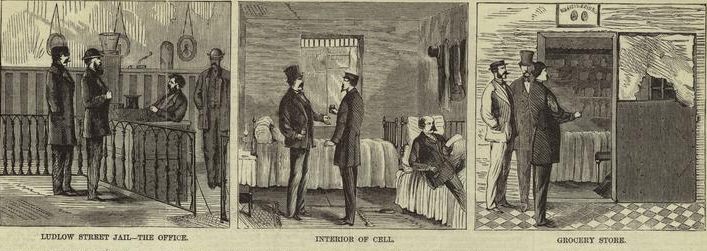
The nicer accommodations of the Ludlow Street Jail - a grocery store and feather beds! Image courtesy the New York Public Library.
Numerous drawings of the more upscale parts of the jail show comfortable-looking beds, a reading room and grocery store, men in top hats, billiard tables, and even velvet drapes! One account even said that the light and air in the Ludlow Street Jail were “probably not surpassed by any prison in the United States.”
Of the hundreds of residents of the Ludlow Street Jail, two stick out in history; Victoria Woodhull and William “Boss” Tweed.
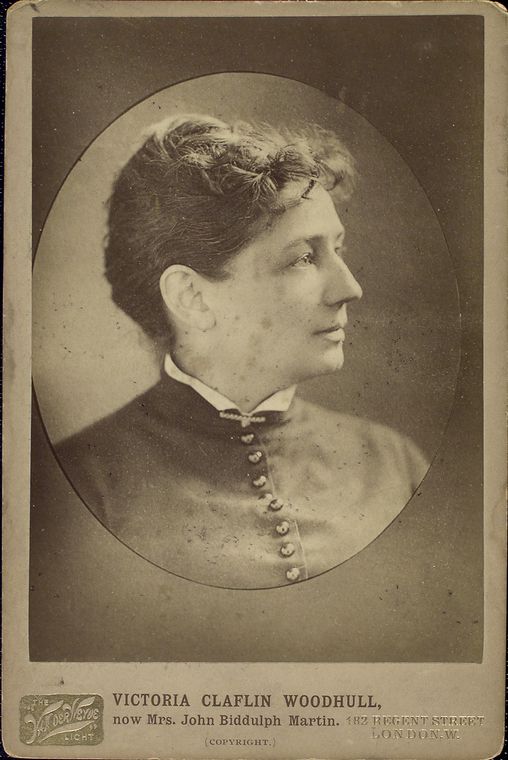
Suffragist and women's right advocate, Victoria Woodhull. Image courtesy the New York Public Library.
Victoria Woodhull was a free love advocate, suffragette, journalist, performer, labor advocate, and first woman to run for President (1872). In fact, Woodhull, the candidate of the small Equal Rights Party, spent election night sitting in the Ludlow Street Jail! She had been arrested the night before for “publishing an obscene newspaper.” Woodhull had been mercilessly mocked in the press for her avocation of free love (a social movement that rejected marriage as a form of women’s oppression).
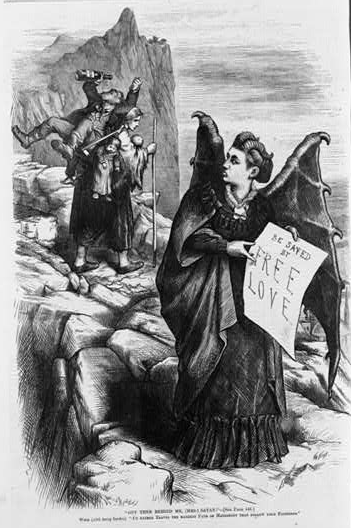
This cartoon, entitled "Get thee behind me, (Mrs.) Satan" is just one of the numerous mocking cartoons at Woodhull's expense. Woodhull, complete with wings and horns, holds a sign which reads "Be Saved by Free Love," while the wife, heavy with the burden of children and drunk husband, cries "I'd rather travel the hardest path of matrimony than follow your footsteps." Image courtesy the Library of Congress.
Her response to the cruel things said about her was to dedicate an entire issue of her newspaper to a story accusing prominent Brooklyn minister Henry Ward Beecher of having an adulterous affair with Elizabeth Tilton to illustrate the double-standard that women face in the press. Her incarceration, masterminded by Anthony Comstock himself, prevented Woodhull from attempting to vote in the 1872 election, as had been her plan.
The second famous alumnus of the Ludlow Street Jail is none other than William “Boss” Tweed. Born and raised on the Lower East Side, Tweed rose to prominence in the Tammany Hall poltical machine that controlled Democratic politics in New York City in the mid-1800’s. At his height, Tweed was the third largest landowner in New York City, controlled a railroad, a bank, a printing company and part owner of a hotel.
In 1873, Tweed was found guilty of multiple counts of fraud and corruption, and was imprisoned in the Ludlow Street Jail, though he was able to leave to visit his home. On one of those home visits, Tweed fled to Spain (and got a few guards fired, we can only assume), but was returned to the United States in 1876. Back in the Ludlow Street Jail, Tweed agreed to testify against his cronies to ensure his release, however, the Govoner refused to abide this deal, and Tweed died in jail in 1878.
Of course, no matter how comparatively nice Ludlow Street Jail was and no matter how interesting some of its former inhabitants were, it was still a good idea to not end up there.
Today, a new type of internment happens on the spot where the Ludlow Street Jail once stood – the block is now a school!
– Posted by Lib Tietjen
